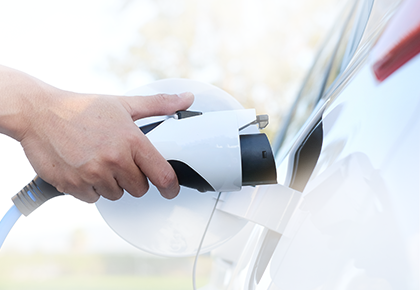You bought an EV and want to install a charger in your condo. Now what?
 Roughly 29% of the U.S population lives in a community association, according to the Foundation for Community Association Research. That includes an estimated 358,000 community associations and 74.2 million residents. EV ownership isn’t that large yet, but it’s growing: nearly 1.5 million electric vehicles were registered across the U.S. in 2021.
Roughly 29% of the U.S population lives in a community association, according to the Foundation for Community Association Research. That includes an estimated 358,000 community associations and 74.2 million residents. EV ownership isn’t that large yet, but it’s growing: nearly 1.5 million electric vehicles were registered across the U.S. in 2021.In older HOA communities, the task of installing EV chargers may not only be an issue of board buy-in but of architectural logistics: Can the current electrical infrastructure handle the load of multiple charging cars? Do new meters or outlets need to be installed? Is there a communal area where charging ports can go, and is it ADA-compliant?
EV CHARGERS AS AN ESSENTIAL UTILITY
Those questions are what can make adding EV chargers a challenge, even when residents and board members see the value in having them. “At this point, we’re seeing [EV charging stations] more as an essential utility,” says Kelly Dougherty, president of FirstService Energy, which advises multifamily buildings within the property management group FirstService Residential on energy-related projects. “It’s more about when is the right time for our associations to put in chargers.”Within FirstService Residential are more than 8,600 associations, including HOAs, condo associations, and coops, and Dougherty says many are currently having conversations about EV chargers. Dougherty says the boards she’s talked to are open to installing chargers, but they often have questions. “They have a responsibility to all the owners in their building to do their research and make sure they’re doing it in the right way,” she says. “It’s definitely very different from a single-family-home situation where you can use an outlet from your own house. This affects other people.”
How a community installs chargers can look different depending on the type residents are looking for—which can vary by voltage, charging speed, cost, and installation—and if a property has public parking spaces or not. Community chargers can also be an income opportunity, which is how Joy first pitched her project to her fellow board members. The board could set its own rate on top of what the local power company charged for electricity, eventually breaking even, and even generating revenue.
“Where it gets a little bit more complicated is if they want to put infrastructure in place for every single deeded parking spot,” Dougherty says. “If they don’t have public spots, how would you make that decision of who gets the infrastructure and who pays for the actual unit? These are some of the questions that have to be asked at the board.” - Click here to read the full article